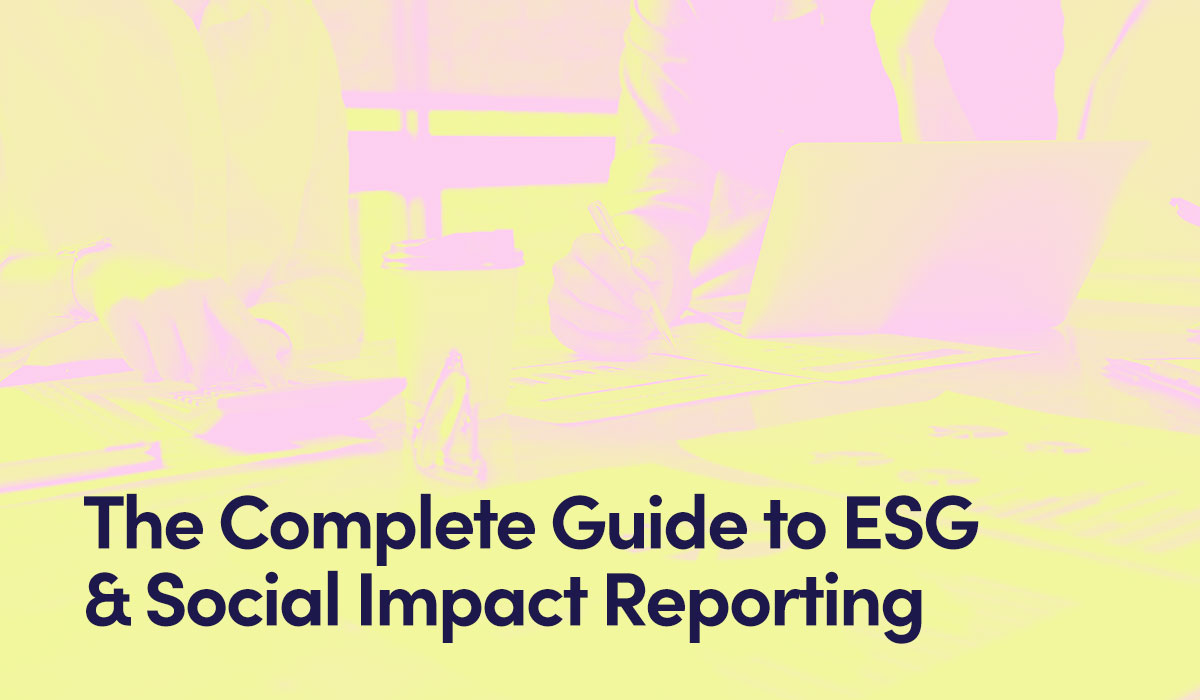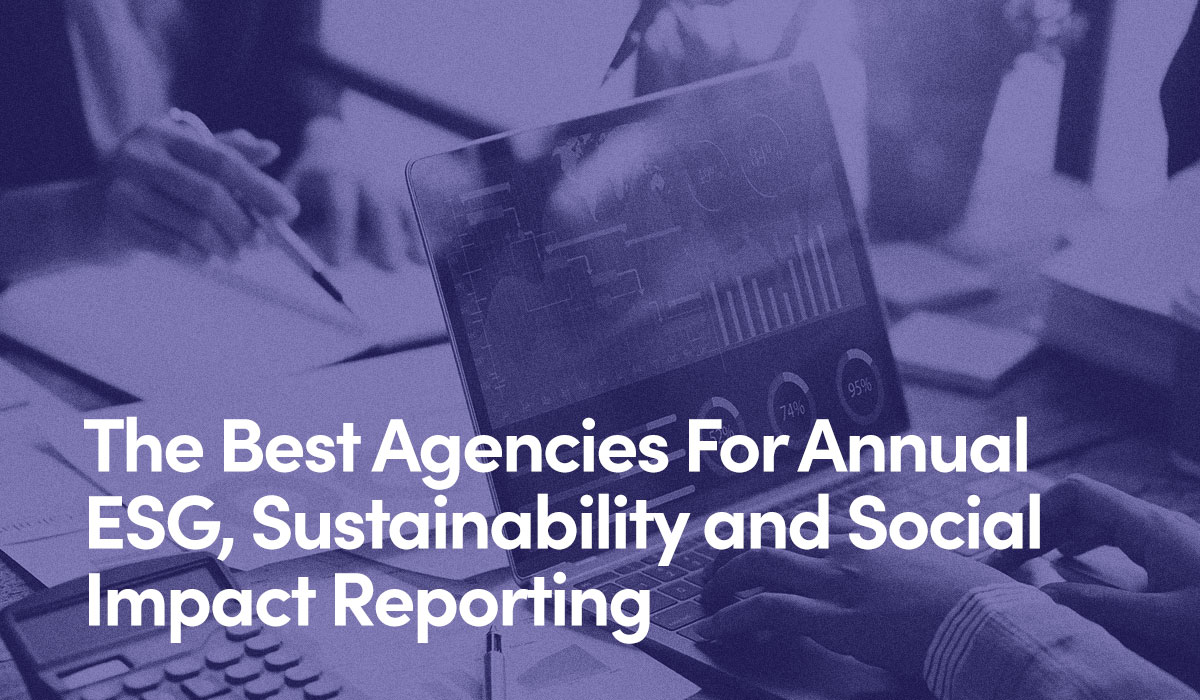Expectations around business reporting have changed considerably in recent years. These days, traditional financial reporting—whether an annual report for millions of public shareholders or a simple IRS information return—tells only a part of an organization’s story.
That’s where reports such as ESG, social impact, DEI, and CSR come in. These are some of the most common annual non-financial reporting approaches used across industries. If your organization is considering adopting a non-reporting strategy, it’s important to understand how they differ and whether a specific framework makes more sense for your organization.
Many terms include topics and goals that overlap, and it can be easy to feel overwhelmed, but that’s where we can help.
In this post, we demystify these non-financial reporting approaches to help organizations better understand this increasingly important reporting practice.
To start, we believe some of the most common terms are better understood within their historical context, so we’ve included a brief history of the evolution of the non-financial reporting movement below.
A Brief History of Non-Financial Reporting
Non-financial reporting was developed in the 1970s and 1980s in response to concerns about companies producing controversial products, such as weapons or tobacco. Reporting amounted to negative screens against companies in these and related areas.
The trend dovetailed with the re-emergence of corporate social responsibility (CSR), first coined several years earlier by American economist Howard Bowen in his 1953 book “Social Responsibilities of the Businessman.”
CSR as self-regulated reporting followed, emphasizing internal corporate ethics, philanthropy, and to a lesser extent, social and environmentally friendly policies.
In the 2000s, the CSR movement was formalized and externalized, as corporate impacts on the growing environmental crisis came to the fore. The call for independent standards and accountability among a widening group of stakeholders (beyond just shareholders) shifted the focus to more strategic, measurable external impacts in Environmental, Social, and Governance (ESG) categories.
ESG has since evolved to become more standardized, with increasing transparency, compliance, and regulation. Most global public companies are now obliged to provide ESG reporting, with small and medium-sized enterprises (SMEs) expected to follow.
Let’s take a look at each of the terms in more detail.
Corporate Social Responsibility (CSR) Reporting
CSR reporting covers corporate initiatives in philanthropy, ethics, and, to a lesser extent, environmental stewardship. Examples include significant corporate donations to “worthy” causes, employee volunteer activities, avoidance of single-use plastics, and fair hiring practices.
- Context: To express good corporate citizenship, contribute to the well-being of society, and balance profits with a deeper purpose.
- Accountability: CSR reporting is mainly self-regulated and communicates how a company fulfills its responsibilities to make the world a better place.
- Potential Benefits: Such reporting can improve social standing, reduce negative environmental impacts, attract employee talent, increase revenues, and bring down costs.
- Selected Frameworks: The Pyramid of Corporate Social Responsibility, Truly Responsible Enterprise (TRE).
- Who (Still) Does It: More companies used to do formal CSR reporting, but have since transitioned to more ESG-like standards and metrics, even if they’ve kept CSR as their non-financial reporting title.
For example, the evolution of the Walt Disney Company’s CSR Reports from 2016 to 2021 clearly shows the shift in emphasis from citizenship initiatives to environmental metrics, including in the CEO‘s letters.
Social Impact Reporting
In its current use, social impact reporting is a catch-all term encompassing everything from a communications tactic (expressing intentions) to an essential component of corporate strategy involving investments with measurable results. There is no single definition, standard, or format.
While not unrelated, social impact expands beyond traditional components of the CSR agenda. It can include philanthropy and volunteerism, policy development and implementation on fair and living wages, worker health and safety, customer privacy, community development, human rights in the supply chain, and much more.
- Context: To recognize (and sometimes shape) the impacts businesses have on the world around them.
- Accountability: Social impact reporting is largely self-defined and self-regulated, though as the use of frameworks increases, the ability to measure and compare social impact is improving.
- Potential Benefits: Can improve a company’s social standing, lessen negative environmental impacts, attract employee talent, increase revenues, and reduce costs.
- Selected Frameworks:Theory of Change, United Nations’ Sustainable Development Goals, Five Dimensions of Impact.
- Who Does It: Smaller organizations and companies that may not have the resources or inclination for more structured non-financial reporting as well as global multinationals. Examples include Civic Consulting Alliance and Thoughtworks.
Showcase Your Positive Impact on the World
Want to Connect With Values-Driven Consumers and Investors?
Amplify Your Story With Social Impact Reporting arrow_forwardDiversity, Equity, & Inclusion (DEI) Reporting
Similar to social impact, Diversity, Equity, and Inclusion (DEI) reporting doesn’t have a prescribed format, though the information covered tends to be more consistent across organizations than other forms of non-financial reporting. At its simplest, DEI includes data on the demographic makeup of employees, such as gender, race, and ethnicity, and across technical and leadership roles. Equity addresses fair access and opportunity for all individuals within the company, and inclusion assesses whether (and to what degree) employees feel a sense of belonging at work.
- Context: With the understanding that a diverse workforce increases productivity, creativity, and cultural awareness, to demonstrate support for and progress on company employment of underrepresented constituencies.
- Accountability: Most larger American companies must report demographic information annually to the U.S. Equal Employment Opportunities Commission via the EEO-1 Component 1 Data Collection (Employer Report). DEI reporting as described here, however, is primarily self-defined and self-regulating一for now. In November 2020, the Securities and Exchange Commission (SEC) introduced requirements for public companies to provide stakeholders with “human capital disclosure” deemed material, or relevant to an investor’s decision to invest. This principles-based approach could include various components of DEI data, subject to each company’s interpretation of materiality. More recently, however, the SEC has signaled additional rulemaking in this area may be forthcoming.
- Potential Benefits: As mentioned, a diverse and thriving workforce can increase creativity, productivity, and cultural awareness, as well as marketing opportunities and reputational lift.
- Selected Frameworks: While formal frameworks are harder to find, national organizations such as the Society for Human Resource Management provide considerable guidance on approaches, best practices, and metrics. Other models are based on industry, organization size, and so on.
- Who Does It: Many companies include DEI reporting as part of a broader report initiative, such as a social impact (check out Allstate) or ESG report. That said, thousands of organizations provide DEI reporting on a standalone basis, including Microsoft, Boeing, and eBay.
Environmental, Social & Governance (ESG) Reporting
More than other non-financial reporting approaches, ESG is often framed as a discussion of the risk/return tradeoffs to the organization (and, by extension, its investors) within ESG areas. For example, under “Environmental,” companies are expected to report on carbon emissions, water usage, waste disposal, and so on.
“Social” can include workforce reporting一similar to DEI一or supply chain labor practices, workplace health and safety, gender pay gap, data privacy, community relations (similar to social impact reporting), and corruption.
“Governance” covers board quality (independence, expertise, and diversity), internal controls, management incentives, and shareholder rights一not unlike CSR.
- Context: As the most extensive and transparent external assessment of organizational societal impact一and the most comprehensively prescribed approach with specific requirements, frameworks, and metrics一ESG has emerged as the leading standard for non-financial reporting for large public companies worldwide. As referenced above, ESG has absorbed many of the criteria of other non-financial reporting approaches, standardized them, and developed metrics that are easily comparable across organizations.
- Accountability: This ranges from self-regulation (for smaller or private companies) to SEC-required ESG disclosure for American public companies. Similar regulations in Europe have been issued via the Corporate Sustainability Reporting Directive. While any company can undertake ESG reporting with whatever criteria it prefers, the overall trend in non-financial reporting is toward further standardization of categories, frameworks, metrics, and expanded compliance.
- Potential Benefits: ESG is understood to have the potential to create value in many of the same areas as other non-financial reporting approaches: customer loyalty, reputation, workforce talent, increased revenues, investment, reduced costs, and many more. It also can mitigate the risk of environmental noncompliance, poor ethical practices, or workplace health and safety.
- Selected Frameworks: Global Reporting Initiative (GRI), Sustainability Accounting Standards Board (SASB), and Task Force on Climate-Related Financial Disclosure (TCFD), B Corp.
- Who Does It: Most global multinationals and many other organizations of nearly all sizes. Here are just a few: Albertsons, Starbucks, and Energy Recovery.
How Should You Approach Non-Financial Reporting?
For most companies, especially small and mid-size enterprises (SMEs), non-financial reporting is still a choice rather than a requirement. However, as our understanding of organizational impact deepens, companies will increasingly be held accountable to a more holistic view of their performance一beyond just profits.
Rather than viewing impact reporting as a chore, consider it an opportunity to better engage customers, employees, investors, and other stakeholders. By all accounts, non-financial reporting can be good for business and, at a minimum, showcase a fuller vision of your organization, what it stands for, and its accomplishments.
Today's consumers and investors demand more transparency from the business community. We support organizations by developing a compelling narrative that clarifies your message, amplifies your mission, and empowers customers, investors, and talent to better engage with your brand. Learn more about our impact reporting capabilities.




